
Trigonometric Ratios of Compound Angles
The sum or difference of two or more
angles is said to be a compound angle.
If A and B are two angles then A + B
or A - B are known as the compound angles.
********************
10 Math Problems officially announces the release of Quick Math Solver and 10 Math Problems, Apps on Google Play Store for students around the world.
********************
********************
We express the trigonometrical ratios of compound angle A + B and A - B in terms of trigonometrical ratios of the angles A and B.
The trigonometrical ratios of the angles
A + B and A - B are known as the addition
and subtraction formula
respectively.
Trigonometric Ratios of Compound Angle A + B (Addition Formula)
Let a revolving line start from OX and
trace out an angle XOY = A and revolve further through an angle YOZ = B.
Therefore, ∠XOZ = A + B.

Let, P be any point on OZ. Draw PM
perpendicular to OX and PN perpendicular to OY. From N draw NQ perpendicular to
OX and NR perpendicular to PM.
Here,
∠RPN = 90° - ∠PNR [∵ NR⊥MP]
= ∠RNO [∵ PN⊥OY]
= ∠NOQ [∵ RN ∥ OX]
= A
Again,
RMQN is a rectangle. So, MR = QN and RN = MQ.
Now
from right angle ΔOMP,
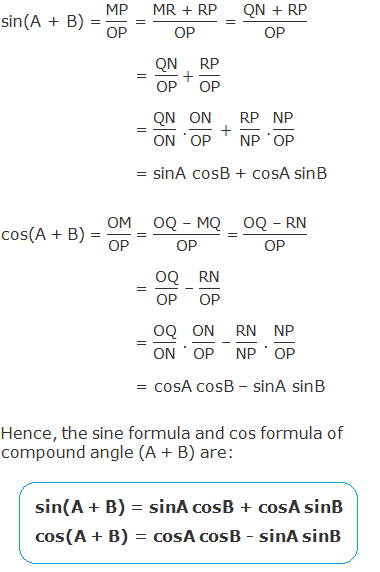
Tangent Formula of Compound Angle (A + B)

Cotangent Formula of Compound Angle (A + B)

Trigonometric Ratios of Compound Angle A – B (Subtraction Formula)
Let a revolving line start from OX and
trace out an angle XOY = A and then revolve back through an angle YOZ = B.
Therefore, ∠XOZ = A - B.

Let, P be any point on the line OZ. Draw
PM perpendicular to OX and PN perpendicular to OY. From N draw NQ perpendicular
to OX and NR perpendicular to MP produced.
Here,
∠RPN = 90° - ∠PNR [∵ PR⊥NR]
= ∠RNY [∵ PN⊥OY]
= ∠XOY [∵ OX ∥ NR]
= A
Again,
QMRN is a rectangle. So, QN = MR and QM = NR.
Now
from right angle ΔOMP,

Tangent Formula of Compound Angle (A – B)
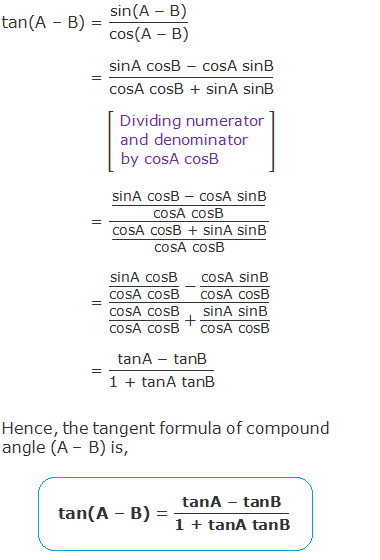
Cotangent Formula of Compound Angle (A - B)

List of Trigonometric Formula for Compound Angles A + B and A – B

Worked Out Examples


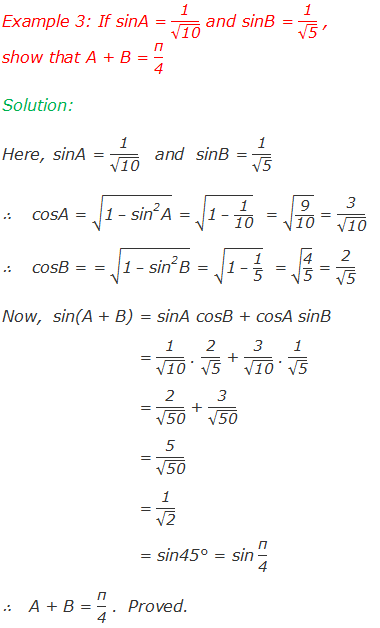

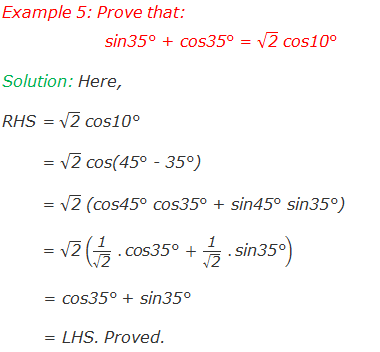

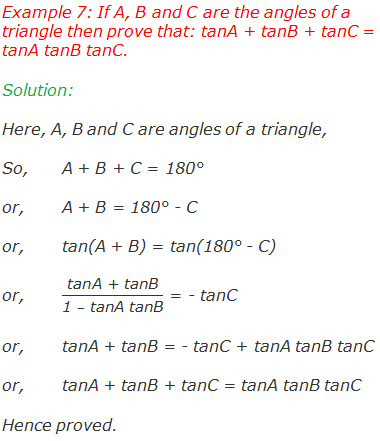
Do you have any questions regarding the trigonometric ratios of compound angles?
You can ask your questions or problems here, in the comment section below.



0 comments: